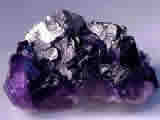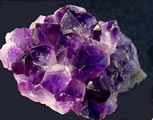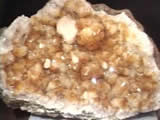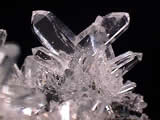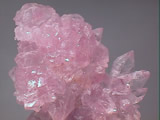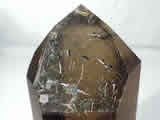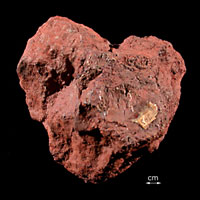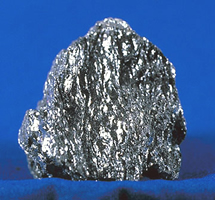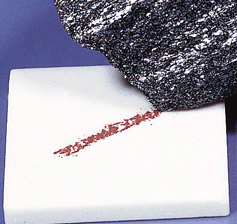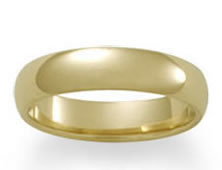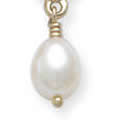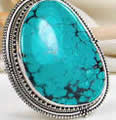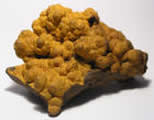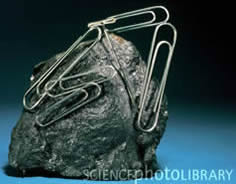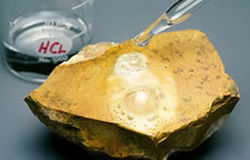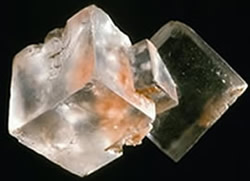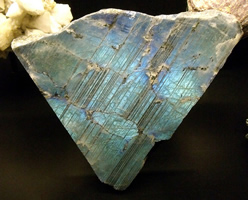-Stage 1.1-
Mineral Basics
Minerals are the basic building blocks of rocks. Most people only know the famous or the pretty ones and don't realize the importance they have. The reason granite is so hard is because of the minerals it is composed of, or the reason marble is so soft and easily carved. Since minerals have specific structures they each have unique properties that when combined are used to identify them.
Previous Step
Next Step
Definition of a Mineral - A mineral is a naturally occurring, homogeneous inorganic solid substance having a definite chemical composition and characteristic crystalline structure, and hardness (dictionary.com).
Mineral Websites
Identifying Minerals
Listed are the main defining characters used in identifying minerals
7.Other (Taste, Acid Reaction, etc.)
Color is the most useless way of identifying minerals, although it is also the principle reason people love them.
Often several minerals contain the same color
Examples of some purple minerals
Or the same mineral has several different colors
Examples of some variations of quartz
-
Although it sounds like the mineral's resistance to being broken (like by a hammer) hardness is actually a minerals resistance to scratching.
-
Hence a diamond is so valuable because it can only be scratched by another diamond
-
The hardness scale (Moh's Scale) runs from 1 (easiest to scratch) to 10 (hardest to scratch)
-
Certain tools that have specific hardness's are used to determine the hardness range of an unknown mineral (Right column)
-
Click on the mineral for a more in-depth description
Moh's Hardness Scale
Minerals/ Tools
Softest (Easiest to scratch)
1 - Talc
2 - Gypsum
2.5 - Fingernail
3 - Calcite
3.5 - Copper Penny
4 - Fluorite
4.5 - Steel Nail
5 - Apatite
5.5 - Glass Plate
6 - Orthoclase
6 - Ceramic Tile
7 - Quartz
8 - Topaz
9 - Corundum
10 - Diamond
Hardest (Most difficult to scratch)
-
To determine a mineral's hardness range using the tools, attempt to scratch it with your fingernail first
-
If it is not scratched, move on to the penny
-
If it is scratched by the penny then the hardness range is 2.5 (not scratched by fingernail) to 3.5 (scratched by penny) [2.5-3.5]
-
Repeat for any mineral
-
Streak is the color of a powdered mineral
-
Unlike color this is actually a very useful determination of a mineral sometimes
-
Also unlike color this does not vary between samples, a mineral's streak is always the same.
-
Determined by using a ceramic tile (#6 on hardness) and scratching the mineral across it. If it leaves behind a colored line, that is the streak.
-
Streaks that are white or colorless are not very helpful in mineral identification
Streak
Example of the color of a mineral does not effect the streak
Two samples of Hematite, one silver one red. Both will give a characteristic bright red streak.
-
Luster is the way a mineral reflects light.
-
There are 2 main types of Luster.
Metallic
- Looks like metal.
For Example - if it looks like a gold or silver ring it is probably metallic
Nonmetallic
- Does not look like metal.
- Can be broken into several different categories.
- The most important category is that it is a nonmetal, the subcategories are not usually used.
Categories
-
Cleavage is the way a mineral breaks along predefined planes (Not what most of you think)
-
A mineral's cleavage is characterized by several methods
-
Whether it breaks into those planes at all (many minerals don't)
-
If it does - How many parallel planes they can break into (1 though 6, although 1 through 3 are the most common)
-
And at what angle the planes intersect at: Used with 2 or 3 planes
-
-
Note: Some minerals that don't break into cleavage planes have crystals which are a result of the way a minerals grows and not how it breaks
-
If you break a crystal, you can tell it's not a cleavage face because the break would not be parallel to the other crystal surfaces.
-
-
A cleavage face is often noticeable by the presence of a reflective surface (one side that reflects light uniformly)
Cleavage
1 direction
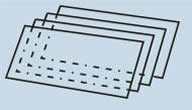
Breaks into thin sheets
2 directions - sides @ 90°
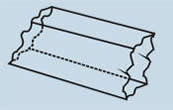
Elongated box with broken ends
2 directions - sides not @ 90°
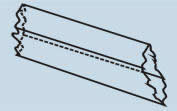
Crushed box with broken ends
3 directions - sides @ 90°

Cube
3 directions - sides not @ 90°
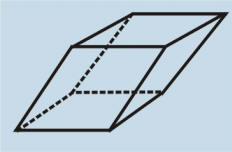
Crushed box

Specific gravity (SG) is how dense an object is, or more simply, how much an object weighs compared with another object of the same size.
-
The least practical of the mineral tests
-
Not commonly used, unless in intensive tests or the result is blatantly obvious
-
Ex - Take a hollow plastic ball and compare the weight with a rock of the same size. They are both the same size but the ball weighs far less - hence has a lower SG
-
-
Usually tested by placing minerals in a tube filled with water ( a graduated cylinder as seen on the right) and seeing how much water they displace.
There are a variety of other tests that sometimes serve as ideal identification methods for some minerals. These include:






